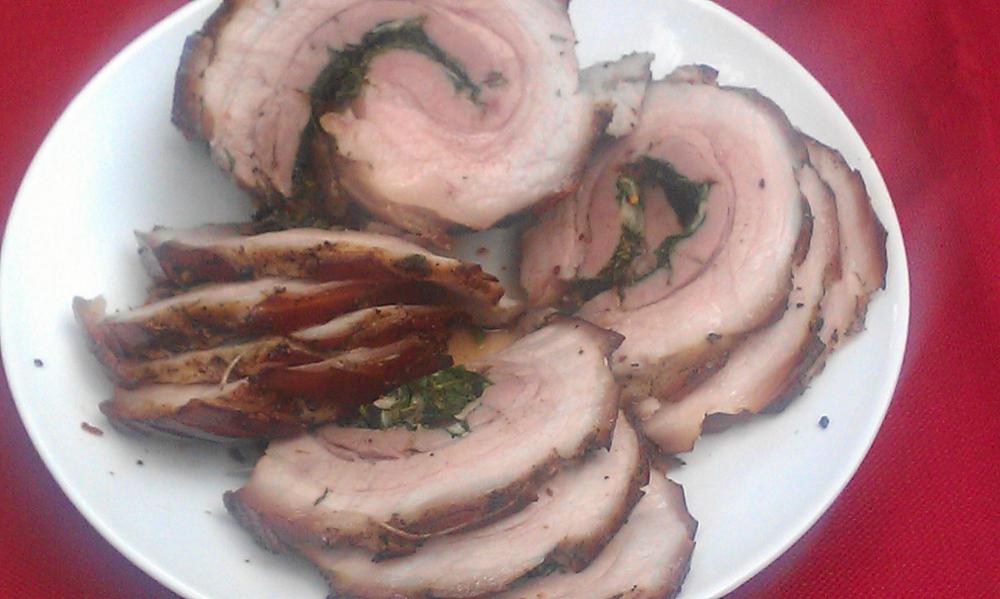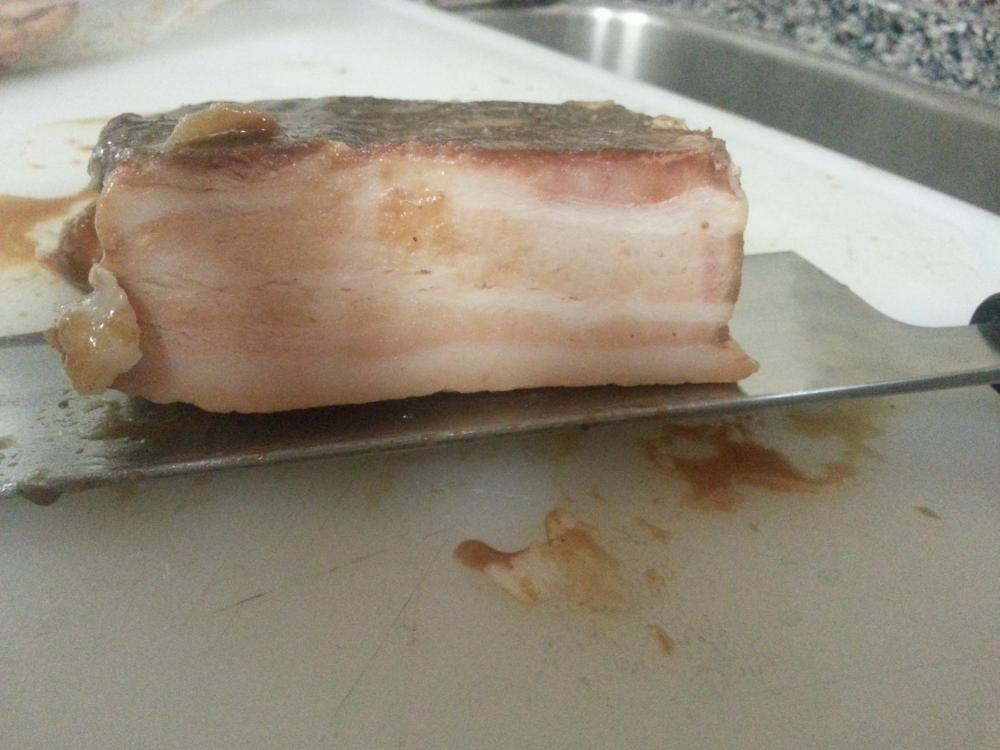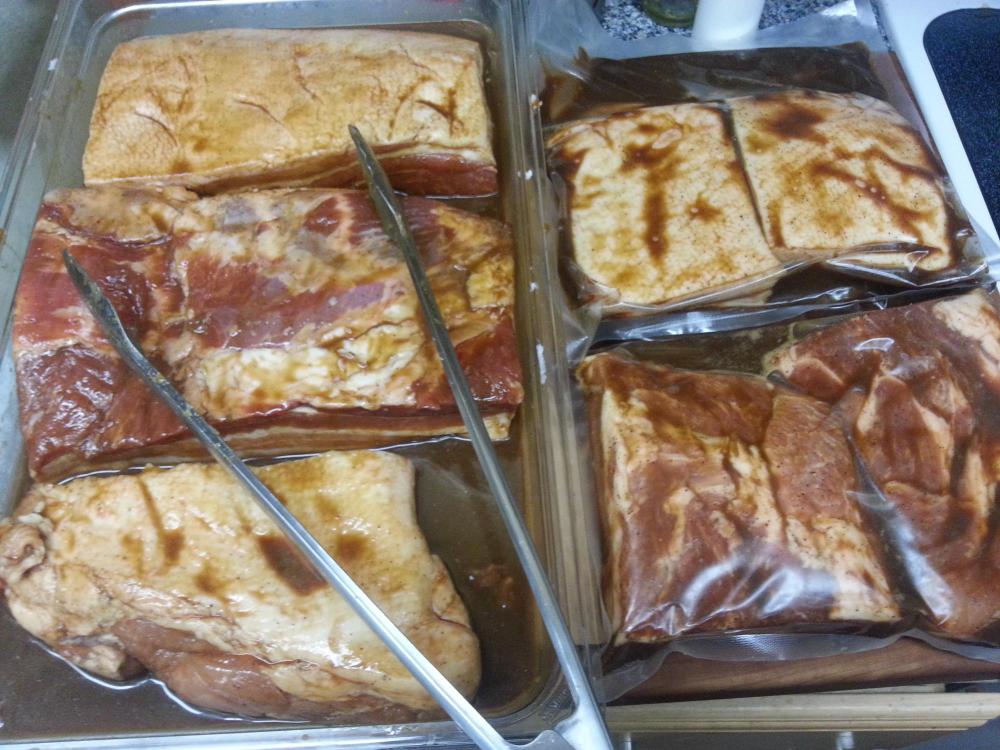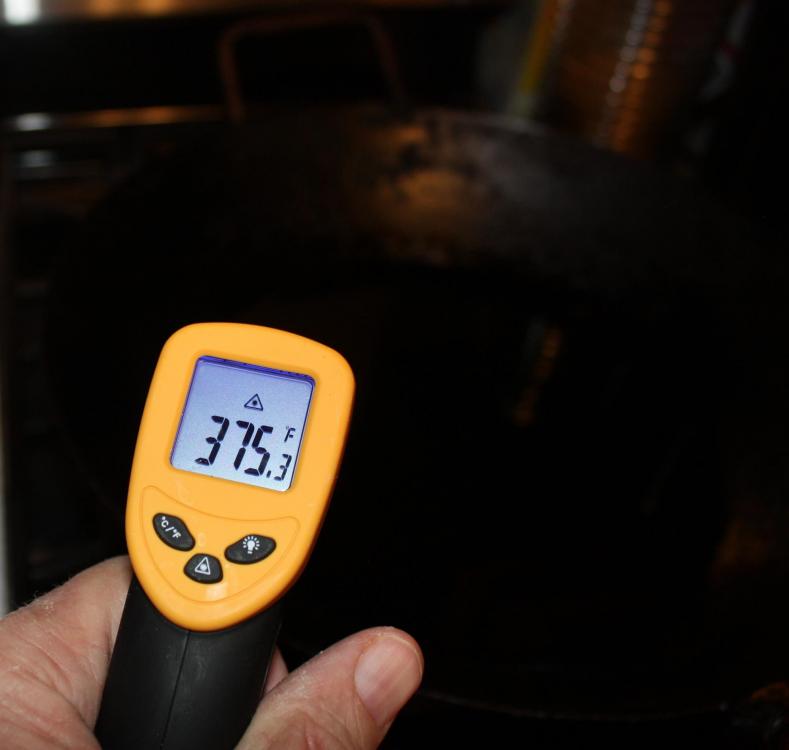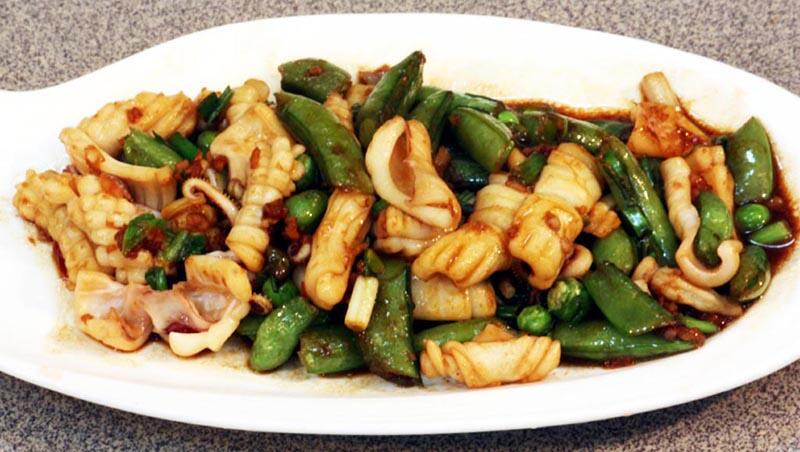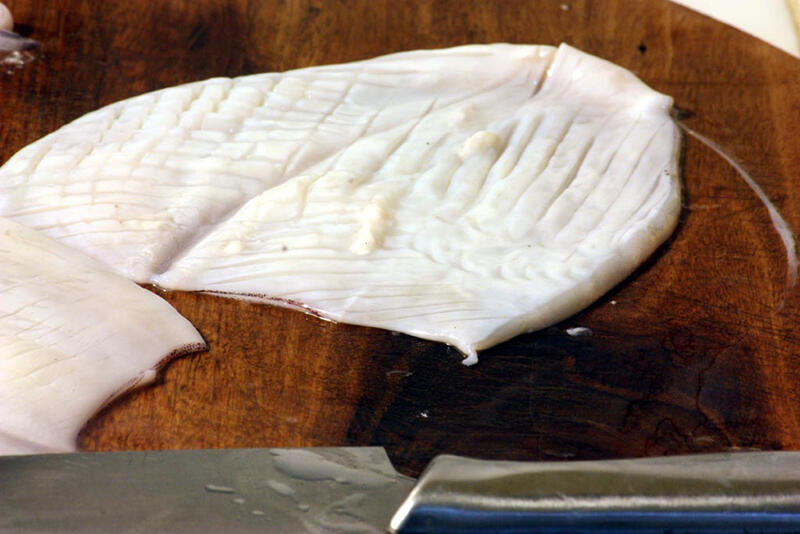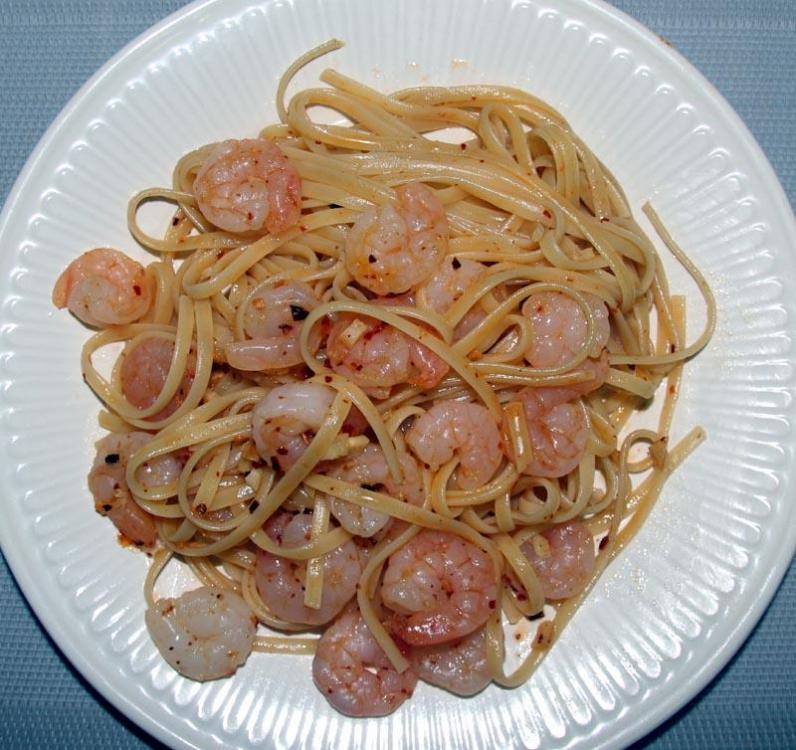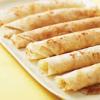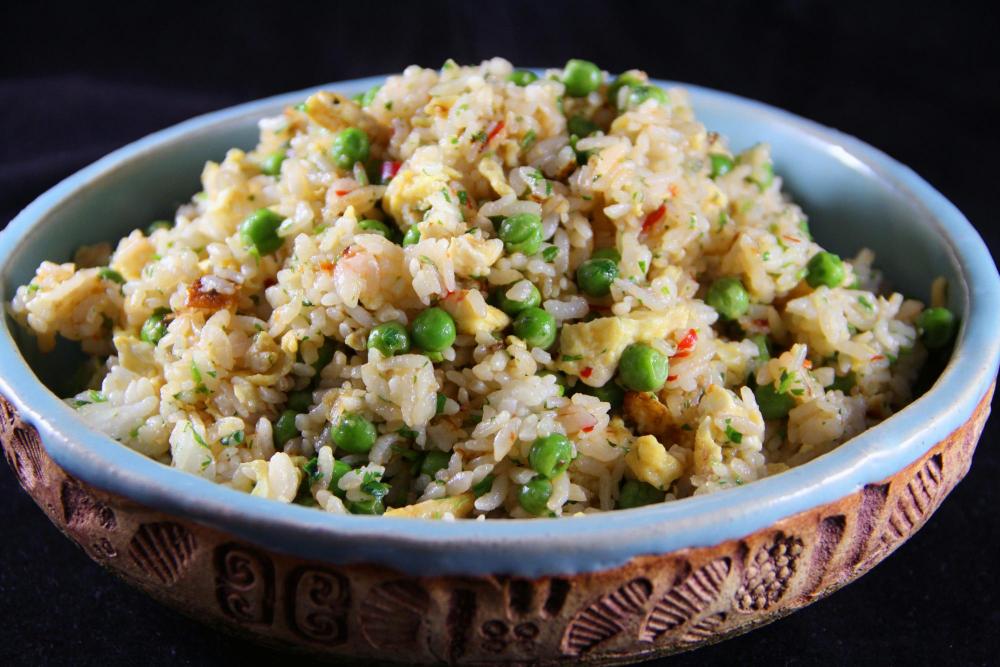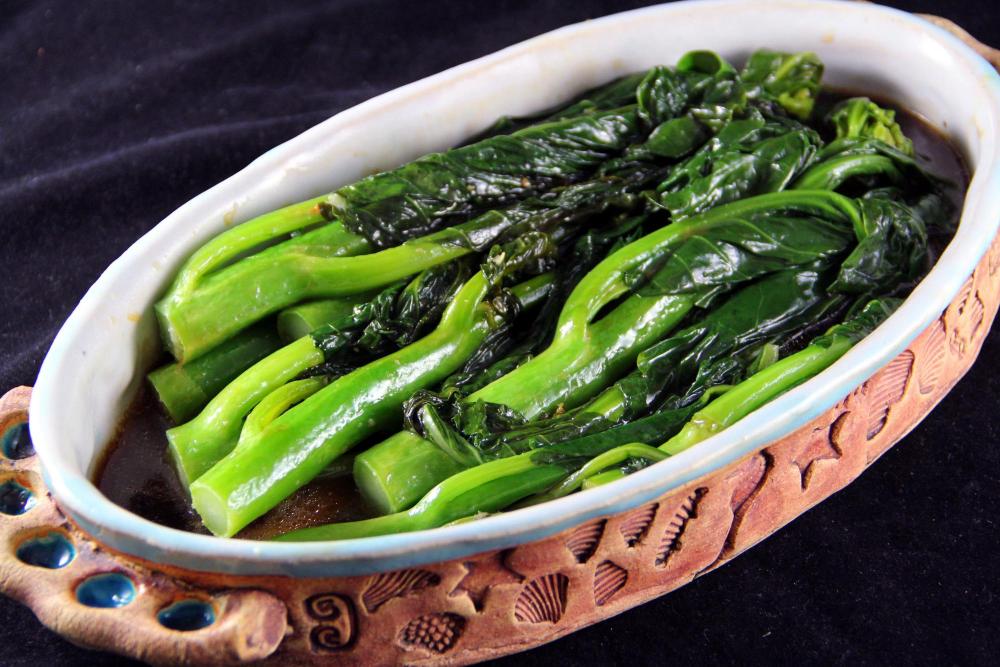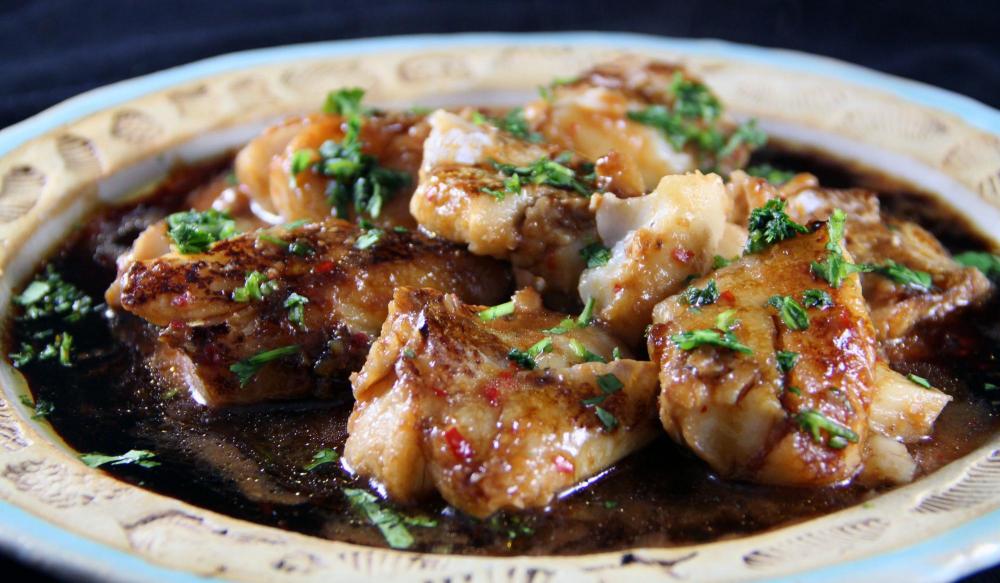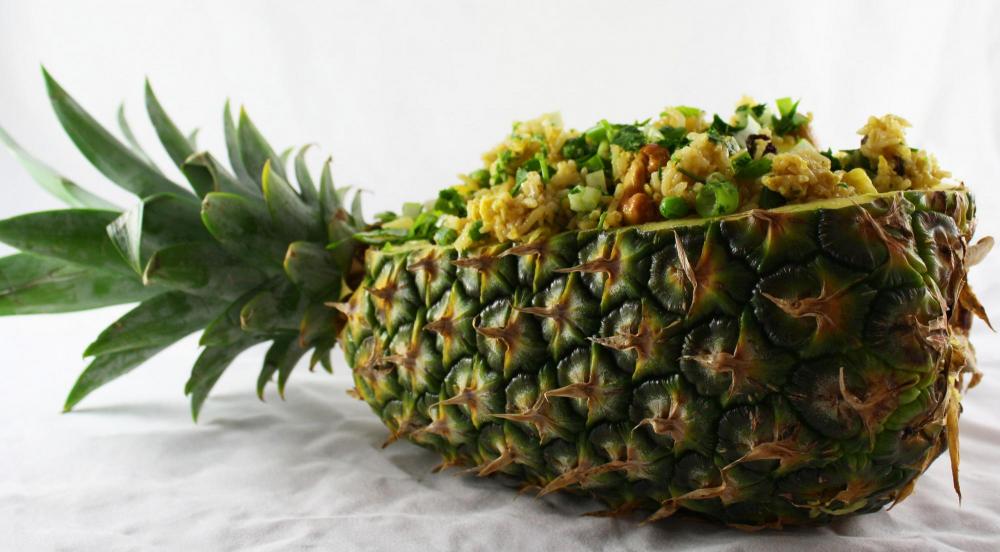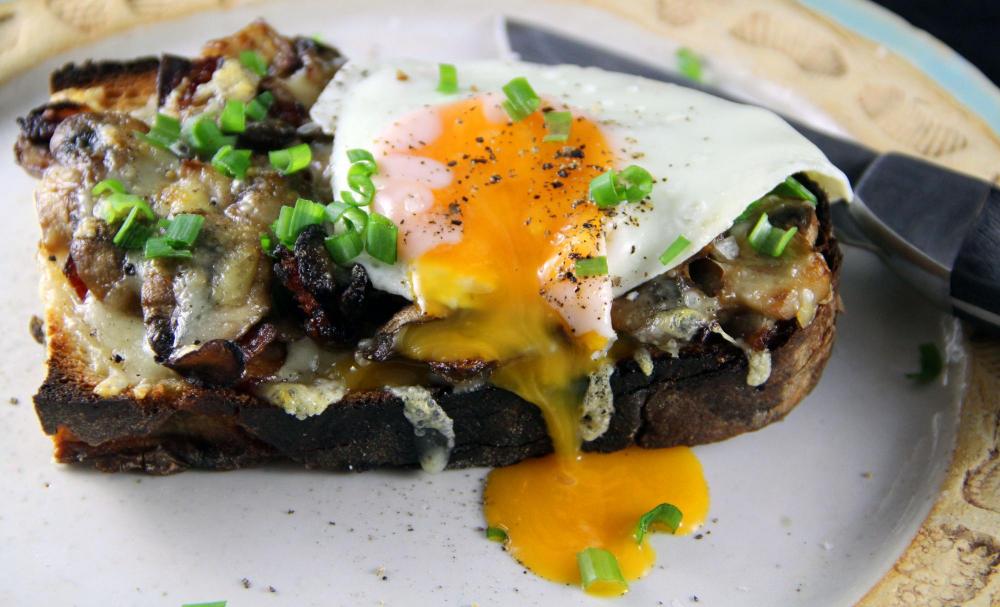Search the Community
Showing results for 'wok'.
-
When I moved from downtown DC to the Maryland countryside fifteen years ago I had to given up gas. I looked into propane (I wanted a La Cornue range) but settled for electric. A disaster. However, after using induction cooktops in Europe (they have been popular for decades there) I became a convert and have used a five burner induction cooktop for the past ten years (supplemented by two more individual hobs). You CAN bridge two elements to use a large pan (I have a couple of large le Creuset dutch ovens that I use that way). You don't miss exact control (with eighteen levels I don't really think that you can get more exact control with gas). You reduce the risk of injury dramatically and have much more work space because you can use the rest of the cooktop while you are using some of the burners (since it doesn't heat up). Cleanup is MUCH MUCH easier because even the "burners" don't get really hot; cleaning an electrical or gas top is a real pain. You may not even need a hood because there simply induction works directly on the pans. There is absolutely no shortage of induction capable pans; I can't use my Dehillerin copper pans that I got while I was doing a course at La Varenne thirty years ago but they are too nice and too difficult to clean to use anyway. Oh, and all new cruise ships use induction, to avoid air quality problems in confined spaces and for safety reasons. Moreover, the claim that it takes fourteen years for a commercial kitchen to pay for induction versus gas cooking is wrong; the major advantage is not any lower energy cost but the need for massive air circulation capability with gas because of carbon monoxide dangers and heat. The additional costs for gas amount to a minimum of tens of thousands of dollars up front. Where wok cooking is concerned, normal gas tops have no real advantage over induction; you only heat the bottom of the wok in both cases. Some Chinese restaurants use a "supercharged" gas burner with a foot control that brings the gas flame up around the wok, great if you can afford one but even most Chinese restaurants can't. There ARE specialised induction woks with a recessed top that provide an induction field around the sides of the wok but they cost at least $2000. However, for around $100 you can get an electrical wok that has an element around the wok part and that gets up to around 500 degrees (fahrenheit) ample for home cooks. As for "anywhere" induction I would suggest that a five burner top is preferable to a four burner "anywhere" one and I suspect that the added complexity of such a top may cost one dearly in the future
-
When I recently purchased a new range, I ruled out induction because of the limitations. The big 3 for me are 1 - cannot bridge 2 burners with a single pan, 2 - you cannot run all burner on high, 3 - limitation on pan material. instead I opted for a dual fuel range with an over the range convection microwave (small kitchen). This configuration has worked very well and I get to use my spring steel wok.
-
Yes, there's a wok smoking tutorial over on Serious Eats - Wok Skills 101: Indoor Smoking that may be helpful if someone wants to use a wok. The recipe calls for blanching the corn first, then smoking 15 minutes over apple, cherry or peach wood. I ordered Cameron brand apple wood smoker chips from Amazon. I did my usual microwave in the husk method, peeled off the husks and followed the 15 min smoking time. You can see from the picture I posted upthread that the corn I smoked this way is much lighter than the photo in @Steve Irby's post just above but I thought the amount of smoky flavor it imparted was good.
-
Thanks for the Saveur link. I'd seen this technique (and done something similar in a wok, for tea-smoked duck) but forgotten about it. It'll be the ticket for me for the next few months. What kind of wood did you use, and how long did you smoke the corn?
-
Looks like you're off to good start. I'm not a fan of zip locks for a long cook, but if that's what you have to work with then..... 2nd the part about clipping the edge to the top of the container so that the seal is not submerged. Your container should be fine with a circulator though I would prefer a 12 qt Cambro for most SV. For long cooks I like a Coleman "stackable". For either container (or yours) a 2 1/2" hole saw will cut an opening for the Anova bluetooth unit. (2 3/4" for Anova 1) If you still have concerns about doing it as a roll you can steak it and do it as pieces (my preferred method) or whole but not rolled per David Chang. The belly pictured was done at 140F. (Pork likes 140F) It was seared outside in a wok. Your oven, cranked up and on broil will work fine but will take it out of commission for dinner rolls, warming, finishing sides etc. Super hot grill, esp with cast iron skillet will work well. Don't forget the liquids in the bag make a great addition to sauce. SV Porchetta stuffed with chick food. Duroc belly steaked: (Note: When steaked you can do as much or as little of the belly as you would like, Freeze other pieces for another day.
-
Fresh Point Judith Squid, I like to clean and prep them myself, not just because it is $2.99 per lb vs $8.99 per, but because I cleaned it myself and know the product much better as a result. To me, these are prime size, being just about a foot long on average. Once you get the moves down, cleaning is a piece of cake. Once cleaned, cutting them up is pretty simple. I cut the "tubes" into 3/4" rings. I shake them up in a plastic bag with about a half cup of flour, seasoned with salt, garlic powder and smoked paprika. I used to use clip on thermometers, but they were awkward and always got in the way. When, you have a big pot of flammable oil over a gas flame, ( I use a wok) simple is best. I love the infra-red hand held thermometer, simple, quick and now, inexpensive. Get the peanut oil up to 375 F. I Fry them up in small batches, so the temp only drops to about 350 F, then drain on paper towels, season with a sprinkle of salt and keep them in a warm oven as the later batches are completed. Tonight, I served the calamari with salads and spicy garlic and lemon aioli. HC
- 636 replies
-
- 24
-

-
The more I study this book, I realize that I don't really know who its intended reader is... The dishes seem to be a "greatest hits" of Peranakan dishes - many of which I saw when I was at the Peranakan restaurant on my last trip to SG - check out my blog for photos, etc... but some ingredients and technique descriptions are so vague.... I find it interesting that the author does not list the amount of coconut milk used in various recipes - but instead, has the cook make their own coconut milk for each dish! So, instead of using 300ml of coconut milk (for example), the author would have you grate 700g of fresh coconut and squeeze to get the coconut milk (she calls #1 Coconut milk, which I imagine is actually coconut cream). She'll then have you add water to the grated coconut to make #2 coconut milk (what I guess is coconut milk). But, I think the book assumes that the reader already has an intimate knowledge of the cooking techniques associated with this cuisine. In addition to the chilli/curry powder issues I described above, it uses such vagaries as: -an ingredient called Streaky Pork (not defined anywhere) -giving directions for deep frying a certain dish, she says "In a heated wok, add cooking oil and heat until very hot" -after marinating chicken, "Place chicken in the sun to dry thoroughly" -for Satay, the main ingredient is just "Pork" - with no specification as to the cut -instructions for making a curry powder for meat: "Wash [whole spices] separately, drain well, and dry in the sun".... put the ingredients on a tray, "Heat oven slightly" and toast the tray of [spices]..... what is the temperature equivalent of "heat oven slightly"? Maddening.... I really want to like this book, and use it, but I wish I could ask questions of someone to help out with the stuff that is vague.
-
That Pyrex some of the pulled pork was in, in my last post? I put it into a different bowl and my husband let the dog lick the pork fat it. 🙈 I tried to dry fry green beans but I should have done them in the wok. They were dull. I gave the dog some. We also had Mac and cheese. The dog didn’t get any of that. But she’s probably the most sated out of all of us.
-
Burnt food is indeed unhealthy, *IF* carbon is being created - however, Wok Hei is the searing / slight browning of anything (I suppose?), thus creating a smokey/toasted aroma. Pre-carbon creation, no doubt. Take for example Beef Ho Fun - the noodles especially are to be toasted to create a bit of browning, as are any veg, thus the Wok Hei technique is accomplished. Same concept for the aforementioned cabbage example, browning/blistering the veg not only caramelizes the sugars, but will also create a smokey note - which is the essence of Wok Hei.
-
That would certainly boost the flavor, wok hei be damned!
-
My uneducated opinion: 1. I have never seen browning vegetables in a Chinese restaurant. Browning food is generally considered unhealthy and to be avoided. 2. Blast furnace hot stove creates appetizing aroma in the air (wok hei?). 3. Blast furnace hot stove for restaurants cooks food faster, and therefore faster customer turnover. 4. In the old China days, pork fat was used frequently for cooking, and fatty meat was preferred. Yes, extreme heat makes lots of aromatic hydrocarbons and Maillard reaction with fat. But high heat does not much to lean chicken white meat cooked in vegetable oil. dcarch
-
Apologies to David Byrne et al. In an attempt to become as annoying as Alton Brown, Kenji writes about how to achieve that elusive wok hei at home. Exactly what @liuzhou has been telling us for years. And as an old (er) home cook, I try to make great food at home for sure - but I don't try to be a restaurant. Well - this is for those who do... https://www.nytimes.com/2020/09/04/dining/stir-fry-recipe-wok-hei.html?action=click&module=Features&pgtype=Homepage
-
OP here. Thank you all for your comments. The only good quality 24" gas wall oven is BlueStar, but that needs to be mounted 7" away from the nearest wall, so not an option for me. Instead I'll use the wall space for pot/pan storage, and buy a 36" Hestan Range with gas oven instead of the planned 36" Hestan Rangetop. I probably wont use the Range's oven as much, and dont really want to give up the pot/pan storage under the stove, but I figure I can keep our woks in the oven and the rest of the pots/pans elsewhere without too much trouble.
-
Sure. It's from Marion's Kitchen. Spicy Peanut Noodle Soup INGREDIENTS 3 tbsp vegetable oil 3 garlic cloves, finely chopped 3cm piece ginger, finely chopped 1 tsp chilli powder (or to taste) 1 tsp sweet paprika 200g (7 oz) pork mince 2 tbsp crunchy peanut butter 2 tbsp soy sauce 1 tbsp vinegar 5 cups chicken stock 400g (14 oz) cooked noodles 12 frozen dumplings Finely sliced spring onion (scallions), to serve INSTRUCTIONS STEP 1 Heat the vegetable oil in a wok or large saucepan over medium-high heat. Add the garlic, ginger, chilli and paprika. Stir-fry for half a minute. Then add the pork and stir-fry until almost cooked. Add the peanut butter, soy sauce and vinegar and stir-fry for about 2 minutes or until thick and bubbling. Add the chicken stock and simmer for 2-3 minutes. Taste and season with extra soy sauce or salt to taste. STEP 2 Cook dumplings in boiling water according to packet instructions. STEP 3 Divide pork soup among serving bowls. Add cooked noodles and top with dumplings. Sprinkle with spring onion and serve.
-
I think a large part of this is that us Westerners are much more exposed to restaurant style cooking and street food than we are to home cooking. This is also visible in going for particular type of dishes (e.g. stir fired noodles, dumplings) rather than others (e.g. broths, simple cooked vegetable dishes). As to cheaters wok hei, I often brush a few of the ingredients with oil before lightly charring them on a flame. Then I chop them as needed and stir fry over high flame as usual. This usually gives enough of the smoky flavor for my taste.
-
Stir-fried Squid with Snow Peas - 荷兰豆鱿鱼 Another popular restaurant dish that can easily be made at home. The only difficult part (and it's really not that difficult) is preparing the squid. However, your seafood purveyor should be able to do that for you. I have given details below. Ingredients Fresh squid. I tend to prefer the smaller squid in which case I allow one or two squid per person, depending on what other dishes I'm serving. You could use whole frozen squid if fresh is unavailable. Certainly not dried squid. Snow peas aka Mange Tout. Sugar snap peas can also be used. The final dish should be around 50% squid and 50% peas, so an amount roughly equivalent to the squid in bulk is what you are looking for. De-string if necessary and cut in half width-wise. Cooking oil. I use rice bran oil, but any vegetable cooking oil is fine. Not olive oil, though. Garlic. I prefer this dish to be rather garlicky so I use one clove or more per squid. Adjust to your preference. Ginger. An amount equivalent to that of garlic. Red Chile. One or two small hot red chiles. Shaoxing wine. See method. Note: Unlike elsewhere, Shaoxing wine sold in N. America is salted. So, cut back on adding salt if using American sourced Shaoxing. Oyster sauce Sesame oil (optional) Salt Preparing the squid The squid should be cleaned and the tentacles and innards pulled out and set aside while you deal with the tubular body. Remove the internal cartilage / bone along with any remaining innards. With a sharp knife remove the "wings" then slit open the tube by sliding your knife inside and cutting down one side. Open out the now butterflied body. Remove the reddish skin (It is edible, but removing it makes for a nicer presentation. It peels off easily.) Again, using the sharp knife cut score marks on the inside at 1/8th of an inch intervals being careful not to cut all the way through. Then repeat at right angles to the original scoring, to give a cross-hatch effect. Do the same to the squid wings. Cut the body into rectangles roughly the size of a large postage stamp. Separate the tentacles from the innards by feeling for the beak, a hard growth just above the tentacles and at the start of the animal's digestive tract. Dispose of all but the tentacles. If they are long, half them. Wash all the squid meat again. Method There are only two ways to cook squid and have it remain edible. Long slow cooking (an hour or more) or very rapid (a few seconds) then served immediately. Anything else and you'll be chewing on rubber. So that is why I am stir frying it. Few restaurants get this right, so I mainly eat it at home. Heat your wok and add oil. Have a cup of water to the side. Add the garlic, ginger and chile. Should you think it's about to burn, throw in a little of that water. It will evaporate almost immediately but slow down some of the heat. As soon as you can smell the fragrance of the garlic and ginger, add the peas and salt and toss until the peas are nearly cooked (Try a piece to see!). Almost finally, add the squid with a tablespoon of the Shaoxing and about the same of oyster sauce. Do not attempt to add the oyster sauce straight from the bottle. The chances of the whole bottle emptying into your dinner is high! Believe me. I've been there! The squid will curl up and turn opaque in seconds. It's cooked. Sprinkle with a teaspoon of so of sesame oil (if used) and serve immediately!
-
I dunno. I haven't the patience to become a good cook of Asian dishes. But I do crank up the exhaust fans and heat the wok to smoking, sear veg and quickly brown marinated meat and chicken. It may not reach the heights of wok hei, but it's enough to create memorable flavor and even more lasting kitchen schmutz.
-
Tonight did not go according to plan. I intended to make something completely different, but around 4 pm got a call requiring me to head off early tomorrow morning for a short (two day trip) for work. I don't really want to go but it pays for my beer and noodles. So instead I picked up a bag of frozen shrimp. Bad mistake. My seafood girl would never forgive me if she knew. Then quickly fried them up with some garlic and chilli and served with linguine. The shrimp were undercooked, so I threw the whole thing back in the wok for about 30 seconds and re-plated - now they were overcooked. I haven't under or overcooked shrimp for decades. Never again. I ate it anyway.
- 478 replies
-
- 11
-

-
I hope that deep fryer or wok is a lot easier to clean than I am imagining it to be. I can't see all the sugar staying put without coming loose into the oil. That snack looks wonderful, though.
-
- 488 replies
-
- 22
-

-
I am a combination of methods (being an Italian married to a Chinese). Most often I stir-fry the Chinese way. Or if a want a lighter taste and a little healthier I cook in a wok, using just the water I estimate will be enough for that vegetable (I especially like green beans and broccoli and cauliflowers in this way). So I put the water required in a wok and bring to boil, add some salt, the vegetables (also I don't overfill) and cover about 3-4 minutes depending from the vegetable and the size, I keep it at fast boiling. Then I uncover and, at this point, only a couple tablespoon water should be left in the wok and the vegetables should be al dente. I stir the vegetable to make sure the sides don't scorch and add a little bit of oil (only extra virgin for me) to coat for flavour, adjust for salt if necessary. In the microwave the vegetable I like best are zucchini coins, cooked with no water and a touch of salt.
-
I have strong opinions about Gen Tso. Most have too thick breading and are kind of gross. Having said that , I love a Gen Tso that 's made well. To me . the Ideal General is not as crusty as Col Sanders, but is lightly floured, cooked fast , and lightly sauced. Not in a deep fryer but in a wok. And needs more soy than the time-honored Gen T allows. Yes, I know it isn't authentic chinese. Neither is chicken tikka masala indian.
-
When I make pineapple rice I usually use this recipe: http://thaifood.about.com/od/vegetarianthairecipes/r/thaifriedrice.htm I even sometimes hollow out the pineapple and serve the rice in it for added fun (old photo of mine): That said, last night I did not have time for this recipe or the fun pineapple. I just cooked a couple of tablespoons of ginger and some garlic in hot oil in a wok, added in a few cups of cold day old rice and let it sear until heated through, then tossed in some chunked pineapple, a handful of cashews, some minced cilantro and a little bit of light soy sauce and rice wine and tossed it all together until hot. Tonight's dinner was something I only make when my husband is not home as he hates it after eating it too many times when we were in college: crusty bread topped with sautéed mushrooms and gruyere cheese. Tonight I added an egg on top.
- 499 replies
-
- 16
-

-
re: induction Wok-king on one of the early seasons of Simply Ming Ming Tsai had an induction unit specifically for a wok on his counter top. built in. he demo'd two wok dishes. that steel wok got blazingly hot. Wok On ! I eventually tracked that unit down : 10 K + nice to have a sponsor that supplied it Id say. this was only on one show, bet it migrated to SomeOne's Home Kitchen
-
"---- Bear in mind that a flat-bottomed wok can warp, like any other pan, and become less usable over time on the induction hob. ---" Induction uses radio waves to heat. warped bottom pots and pans are not as critical as on other types of electric cook tops. dcarch



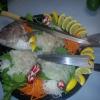
.thumb.jpg.86a685da52eb2f015ac52104c414040d.jpg)
